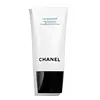What's inside
What's inside
 Key Ingredients
Key Ingredients

 Benefits
Benefits

 Concerns
Concerns

 Ingredients Side-by-side
Ingredients Side-by-side

Water
Skin ConditioningGlycerin
HumectantSodium Palmitate
CleansingSodium Stearate
CleansingSodium Methyl Cocoyl Taurate
CleansingPolyethylene
AbrasivePotassium Palmitate
EmulsifyingPotassium Stearate
CleansingSodium Laurate
CleansingPotassium Laurate
EmulsifyingPalmitic Acid
EmollientStearic Acid
CleansingPotassium Myristate
EmulsifyingLauric Acid
CleansingSodium Myristate
CleansingPEG-3 Distearate
EmulsifyingSalicornia Herbacea Extract
Skin ConditioningAlgae Extract
EmollientSodium Laureth Sulfate
CleansingCaprylic/Capric Triglyceride
MaskingMyristic Acid
CleansingParfum
MaskingSodium Cocoyl Isethionate
CleansingWater, Glycerin, Sodium Palmitate, Sodium Stearate, Sodium Methyl Cocoyl Taurate, Polyethylene, Potassium Palmitate, Potassium Stearate, Sodium Laurate, Potassium Laurate, Palmitic Acid, Stearic Acid, Potassium Myristate, Lauric Acid, Sodium Myristate, PEG-3 Distearate, Salicornia Herbacea Extract, Algae Extract, Sodium Laureth Sulfate, Caprylic/Capric Triglyceride, Myristic Acid, Parfum, Sodium Cocoyl Isethionate
Water
Skin ConditioningBabassu Oil Glycereth-8 Esters
EmulsifyingDisodium Cocoyl Glutamate
CleansingLauramidopropyl Hydroxysultaine
CleansingSodium Lauroyl Glycinate
CleansingGlycerin
HumectantEuterpe Oleracea Fruit Extract
Morinda Citrifolia Fruit Extract
Skin ConditioningPunica Granatum Fruit Juice
MaskingGarcinia Mangostana Fruit Extract
Skin ConditioningCoffea Arabica Seed Extract
MaskingCamellia Sinensis Leaf Extract
AntimicrobialLycium Barbarum Fruit Extract
AstringentSodium Chloride
MaskingSodium Laurate
CleansingSodium Lauroamphoacetate
CleansingStearamidoethyl Diethylamine
Phenoxyethanol
PreservativeParfum
MaskingEthylhexylglycerin
Skin ConditioningWater, Babassu Oil Glycereth-8 Esters, Disodium Cocoyl Glutamate, Lauramidopropyl Hydroxysultaine, Sodium Lauroyl Glycinate, Glycerin, Euterpe Oleracea Fruit Extract, Morinda Citrifolia Fruit Extract, Punica Granatum Fruit Juice, Garcinia Mangostana Fruit Extract, Coffea Arabica Seed Extract, Camellia Sinensis Leaf Extract, Lycium Barbarum Fruit Extract, Sodium Chloride, Sodium Laurate, Sodium Lauroamphoacetate, Stearamidoethyl Diethylamine, Phenoxyethanol, Parfum, Ethylhexylglycerin
 Reviews
Reviews

Ingredients Explained
These ingredients are found in both products.
Ingredients higher up in an ingredient list are typically present in a larger amount.
Glycerin is already naturally found in your skin. It helps moisturize and protect your skin.
A study from 2016 found glycerin to be more effective as a humectant than AHAs and hyaluronic acid.
As a humectant, it helps the skin stay hydrated by pulling moisture to your skin. The low molecular weight of glycerin allows it to pull moisture into the deeper layers of your skin.
Hydrated skin improves your skin barrier; Your skin barrier helps protect against irritants and bacteria.
Glycerin has also been found to have antimicrobial and antiviral properties. Due to these properties, glycerin is often used in wound and burn treatments.
In cosmetics, glycerin is usually derived from plants such as soybean or palm. However, it can also be sourced from animals, such as tallow or animal fat.
This ingredient is organic, colorless, odorless, and non-toxic.
Glycerin is the name for this ingredient in American English. British English uses Glycerol/Glycerine.
Learn more about GlycerinParfum is a catch-all term for an ingredient or more that is used to give a scent to products.
Also called "fragrance", this ingredient can be a blend of hundreds of chemicals or plant oils. This means every product with "fragrance" or "parfum" in the ingredients list is a different mixture.
For instance, Habanolide is a proprietary trade name for a specific aroma chemical. When used as a fragrance ingredient in cosmetics, most aroma chemicals fall under the broad labeling category of “FRAGRANCE” or “PARFUM” according to EU and US regulations.
The term 'parfum' or 'fragrance' is not regulated in many countries. In many cases, it is up to the brand to define this term.
For instance, many brands choose to label themselves as "fragrance-free" because they are not using synthetic fragrances. However, their products may still contain ingredients such as essential oils that are considered a fragrance by INCI standards.
One example is Calendula flower extract. Calendula is an essential oil that still imparts a scent or 'fragrance'.
Depending on the blend, the ingredients in the mixture can cause allergies and sensitivities on the skin. Some ingredients that are known EU allergens include linalool and citronellol.
Parfum can also be used to mask or cover an unpleasant scent.
The bottom line is: not all fragrances/parfum/ingredients are created equally. If you are worried about fragrances, we recommend taking a closer look at an ingredient. And of course, we always recommend speaking with a professional.
Learn more about ParfumSodium Laurate is the sodium salt of lauric acid. It is a cleansing and emulsifying ingredient.
Emulsifiers help prevent ingredients such as water and oils from separating.
Water. It's the most common cosmetic ingredient of all. You'll usually see it at the top of ingredient lists, meaning that it makes up the largest part of the product.
So why is it so popular? Water most often acts as a solvent - this means that it helps dissolve other ingredients into the formulation.
You'll also recognize water as that liquid we all need to stay alive. If you see this, drink a glass of water. Stay hydrated!
Learn more about Water